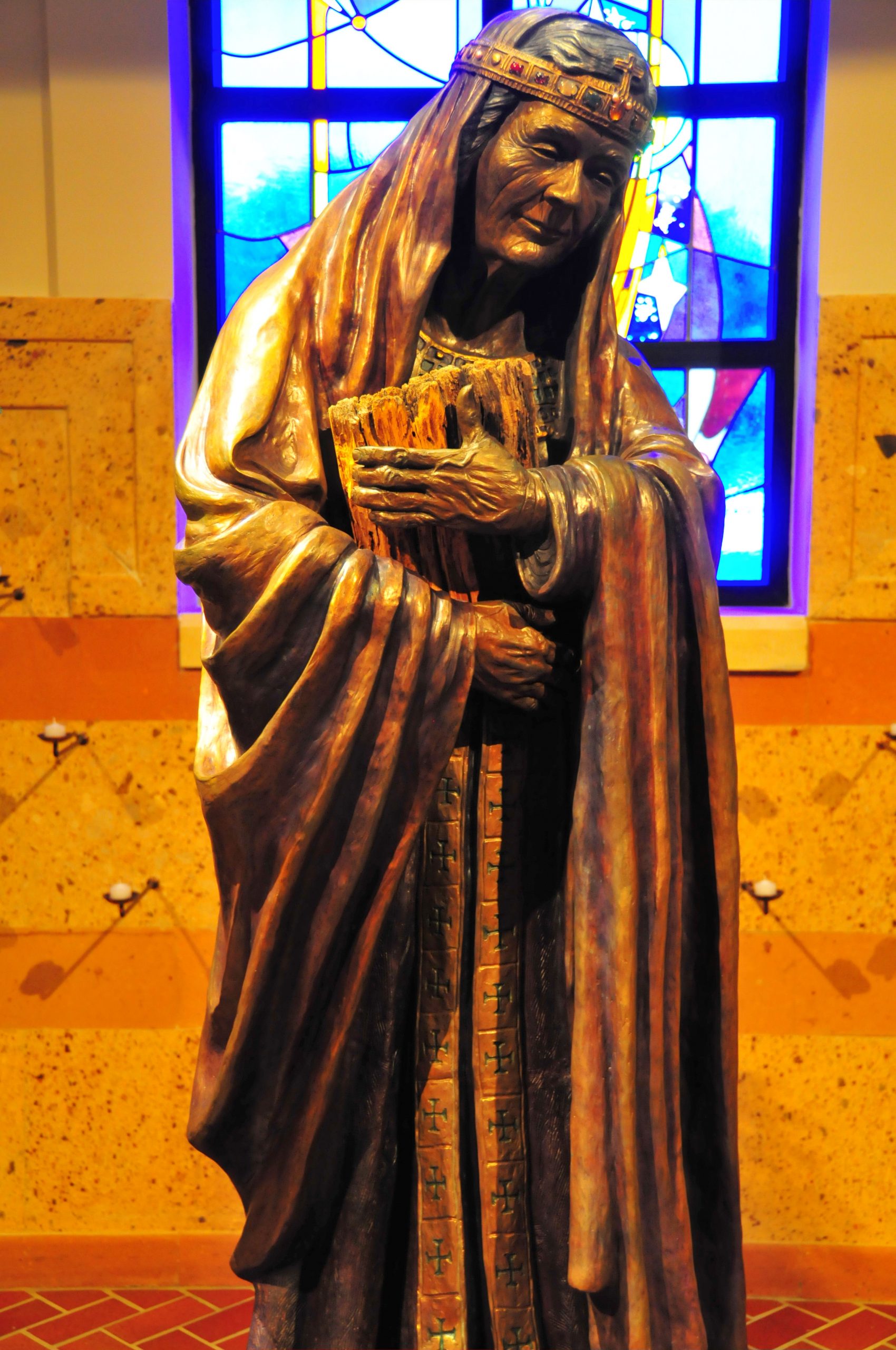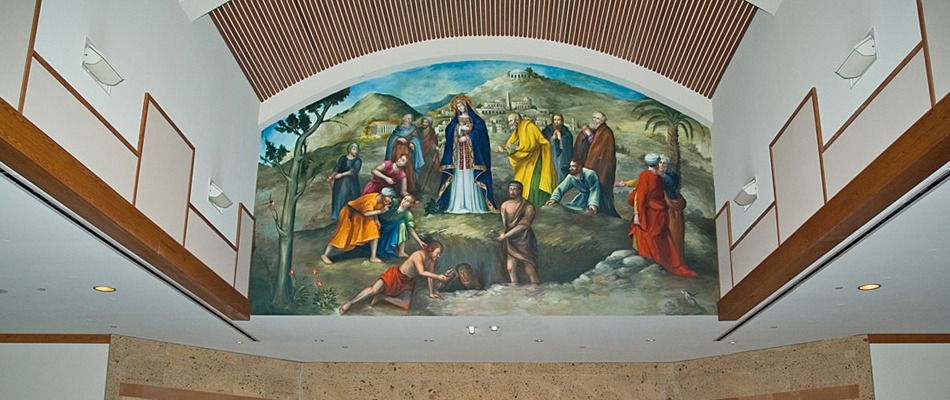St. Helen Catholic Church’s History
 |
In 1952, the Oblates of Mary Immaculate (O.M.I.), who were in charge of St. John the Baptist Catholic Church in Alvin, agreed to minister to a mission church in Pearland. As the membership grew, St. Helen Catholic Church was officially established as a parish on February 16, 1966. Fr. Edwin Krezewinski, O.M.I., was appointed the first pastor with 250 registered families.
Fr. Edward J. Cronin, O.M.I. was appointed pastor in 1968 and was instrumental in planning St. Helen’s Parish Center. In addition to the church which seated 300, the Center included administrative offices, a kitchen, and CCE classrooms with folding doors which could be opened to form a parish hall.
From 1969-1972, Fr. George Julian, O.M.I., Fr. Don McNally, O.M.I. and Fr. Robert Vreteau, O.M.I. served at St. Helen.
In 1973, Father Gerard Barrett, O.M.I., was named pastor. Under his direction, a two story, Education & Recreation (E/R) building, was completed in 1976.
Fr. Daniel McKenna, O.M.I., appointed pastor in 1977, soon began expansion plans for the existing church to provide seating for 800 persons. The bell tower was erected, the lighted church sign installed and the paved parking area enlarged. Fr. George Baynes, O.M.I., Fr. Luis Villarreal, O.M.I., and Fr. Blas Herradar, also served at St. Helen.
Having become a well established parish, the leadership was turned over to the Diocese of Galveston-Houston. In the interim, Fr. Leo Gauvin, O.M.I., served as pastor. It is a tribute to the vision and zeal of the priests of the Oblates of Mary Immaculate that St. Helen’s had such gratifying beginnings.
In 1984, Msgr. Leroy Braden was assigned as pastor by Bishop Joseph Fiorenza. Serving as past parochial vicars have been Fr. Eugene Heyck, C.S.B., Msgr. Narciso Quinamot, Fr. Joseph B. Courtney, C.S.B., Msgr. Seth F. Hermoso, Fr. Trung Nguyen and Fr. Gary Rickles.
During these years, the building of the Charlie Mack Pavilion, rectory, parish offices and extending the parking lot was accomplished. St. Helen Catholic School was built in 1997.
In 1998 Msgr. Reginald Nesvadba was appointed pastor. Serving as past parochial vicars during this time period have been Fr.Wayne Wilkerson, Fr. Edmund Eduarte, Fr. Rodolfo Cal-Ortiz -“Fr. Jojo”, and Fr. Carl James Courville – “Fr. Jim”.
In 2013 Msgr. Reginald Nesvadba retired and Fr. Carl James Courville – “Fr. Jim” was appointed administrator.
In 2014, Fr. Jim was appointed pastor, and in 2022, Fr. Luis Garcia was appointed parochial vicar.
Life of St. Helen
 | St. Helen was born, so far as can be ascertained, at Drepanum in Bithynia, possibly an innkeeper’s daughter. Somewhere around 270, the Roman general Constantius Chlorus met her and, in spite of her humble birth, married her. When Constantius was made Caesar, he was persuaded to divorce her and marry Theodora, the step-daughter of the Emperor Maximian. Some years earlier Helen had given birth to a son, Constantine, who had a deep regard and affection for his mother. Constantine became the first Christian Emperor. He declared Christianity a legal religion, ending the persecutions in the Roman Empire. ** The St. Helen Bronze Sculpture shown at left was created by Lynn Kircher. This sculpture was purchased by St. Helen’s Church and is appreciated in all it’s intended glory. Lynn’s hands and heart are truly touched by the spirit of the Lord. The works of Lynn Kircher are world-renowned and in April of 2002, Lynn fulfilled a life long dream when he and his mom, his first patron, presented a sculpture to John Paul II for the Vatican Collection. |
In about 312, St. Helen became a Christian. She made use of the treasures of the empire by giving money to the poor, cared for the indigent and distressed and built numerous churches. After the victory in Licinius in 324, Constantine became master of the East. At this time St. Helen went to Palestine to venerate the places made sacred by the bodily presence of our Lord. After Golgotha and the holy sepulchre had been laid bare by the removal of the terrace and temple of Venus with which the Emperor Hadrian had over-built them, Constantine wrote to St. Marcarius, Bishop of Jerusalem, ordering a church to be built. St. Helen took the task on herself to see this work executed, desiring at the same time to discover the sacred cross on which our Redeemer died. The finding of three crosses in a rock-cistern just to the east of Calvary is celebrated on May 3. The story of her finding the cross is the subject of Cynewulf’s finest poem, Elene ( 9th century).
Whether or not she actually took an active part in the finding of the cross, it is beyond dispute that Helen’s last days were spent in Palestine. Eusebius reports that she built two basilicas, one on the Mount of Olives and one at Bethlehem. Coins that bore her name, Flavia Julia Helena, were minted in 330, presumably the year of her death. This occurred apparently somewhere in the East, and her body was taken to Rome for burial.
The feast of St. Helen is celebrated annually on August 18th.

